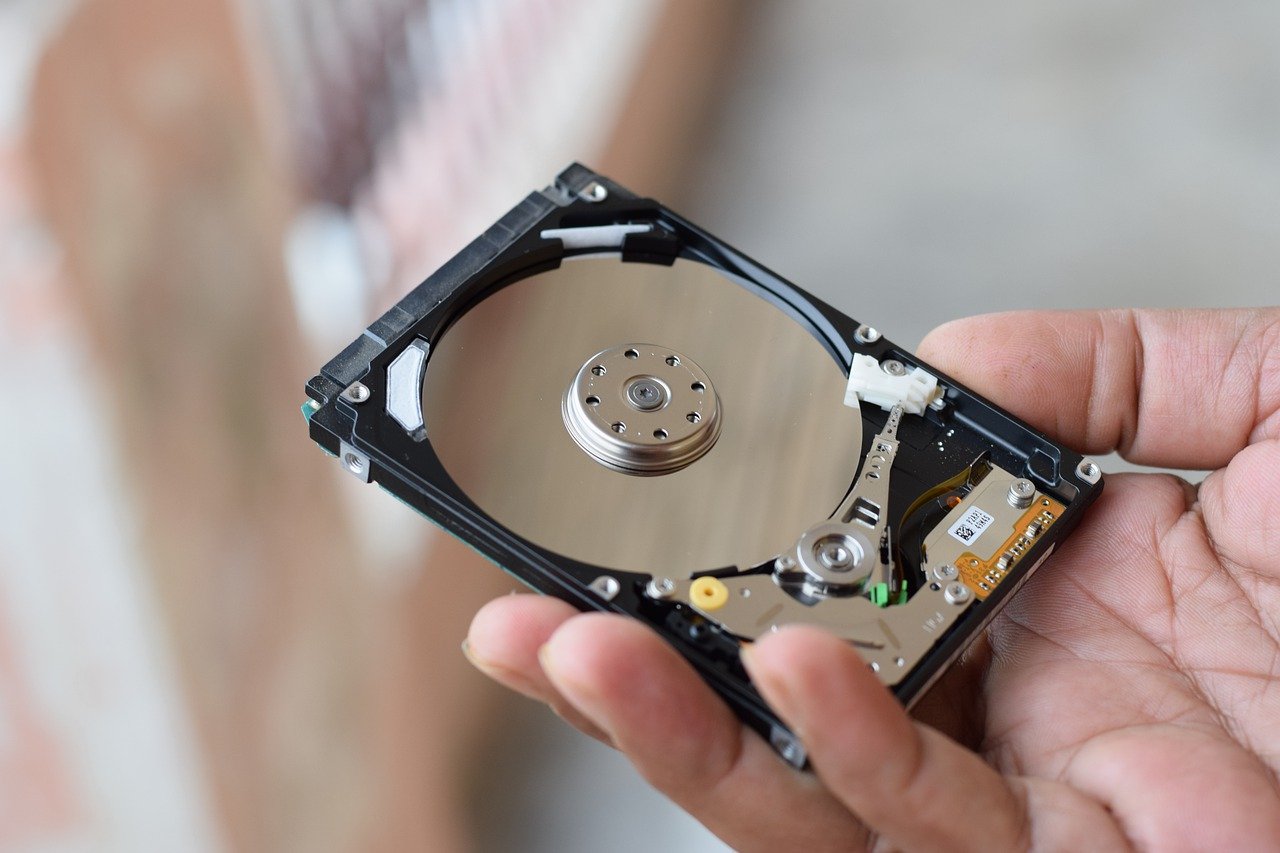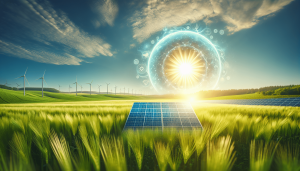How can we store renewable energy at home? This question becomes increasingly relevant as more of us aim to live sustainably and reduce our carbon footprint. With advancements in technology and growing environmental consciousness, storing renewable energy at home is not just a dream—it’s an attainable reality. We’ll explore various methods and solutions to help us effectively store the renewable energy we generate.
Understanding Renewable Energy Storage
Before we delve into specifics, let’s understand why storing renewable energy at home is vital. Renewable energy sources like solar and wind are intermittent, meaning they don’t provide a constant stream of power. We generate more energy during peak production times, but our demand doesn’t always align with these peaks. This is where storage comes in; it helps us balance supply and demand, ensuring a continuous energy flow even when the sun isn’t shining or the wind isn’t blowing.
Benefits of Storing Renewable Energy
Renewable energy storage offers several benefits, making it an attractive option for those of us looking to enhance sustainability at home.
- Energy Independence: By storing energy, we become less dependent on the grid, leading to greater autonomy and security.
- Cost Savings: Stored energy can reduce utility bills by supplying power during peak usage times when electricity rates are higher.
- Reliability: Stored renewable energy can act as a backup during power outages, ensuring our homes remain powered.
- Environmental Impact: Utilizing stored energy reduces our reliance on fossil fuels, which helps lower greenhouse gas emissions.
Types of Renewable Energy We Can Store
The two most common forms of renewable energy for home use are solar and wind. Each has unique characteristics that affect how we can store the generated energy.
- Solar Energy: Captured using solar panels, this is one of the most accessible forms of renewable energy.
- Wind Energy: Generated by wind turbines, it’s less common in residential settings but still feasible with the right conditions and equipment.
Methods of Storing Renewable Energy at Home
There are various methods we can use to store the renewable energy produced at home. While some are more prevalent than others, each has its advantages and ideal use cases.
Batteries
Batteries are the most common method for storing renewable energy at home. They store electrical energy in chemical form and release it when needed.
Types of Batteries
| Type of Battery | Characteristics | Pros | Cons |
|---|---|---|---|
| Lead-Acid | Traditional, widely used | Low cost, reliable | Heavy, short lifespan |
| Lithium-Ion | Common in modern installations | High efficiency, long lifespan | Higher cost, sensitive to temperature |
| Flow Batteries | Emerging technology | Long lifespan, easily scalable | High initial cost, complex |
Flywheels
Flywheel energy storage involves a rotating mechanical device that stores energy kinetically.
How Flywheels Work
Flywheels store energy by accelerating a rotor to a very high speed and maintaining that rotational energy. When energy is needed, the rotor’s momentum can be converted back into electrical energy.
Pros and Cons of Flywheels
| Pros | Cons |
|---|---|
| Long lifecycle | High cost |
| High efficiency | Requires maintenance |
| Quick response time | Bulky equipment |
Thermal Storage
Thermal energy storage involves storing energy in the form of heat or cold, which can then be used for heating and cooling applications in our homes.
Types of Thermal Storage
| Type | Characteristics | Pros | Cons |
|---|---|---|---|
| Water Tanks | Stores heat in water | Simple, cost-effective | Large space requirement |
| Phase Change Materials (PCM) | Stores and releases energy during phase transition | Compact, high energy density | High material cost |
| Molten Salt | Stores thermal energy in molten salts | High capacity | High temperature operation |
Hydrogen Storage
Hydrogen storage entails converting renewable energy into hydrogen via electrolysis, which can then be stored and used as needed.
How Hydrogen Storage Works
Electrolysis splits water into hydrogen and oxygen using the electricity generated from renewable sources. The hydrogen can be stored under pressure and used in fuel cells to produce electricity when required.
Pros and Cons of Hydrogen Storage
| Pros | Cons |
|---|---|
| Long-term storage | High cost |
| High energy capacity | Lower efficiency |
| Environmentally friendly | Complex infrastructure needed |
Pumped Hydro Storage
Pumped hydro storage uses water reservoirs at different elevations to store energy. It’s more common on a larger scale but can be adapted for residential use under the right circumstances.
How Pumped Hydro Storage Works
Excess energy is used to pump water from a lower reservoir to a higher one. When energy is needed, the water is released back down through turbines, generating electricity.
Pros and Cons of Pumped Hydro Storage
| Pros | Cons |
|---|---|
| High efficiency | Requires significant space |
| Long lifespan | High initial cost |
| Reliable and robust | Geographically limited |

Choosing the Right Storage Solution for Our Home
Selecting the right renewable energy storage solution depends on several factors, including our energy needs, budget, and available space. Here, we’ll break down key considerations to help us make an informed decision.
Assessing Our Energy Needs
First, we need to evaluate our energy consumption patterns. This helps us determine the storage capacity required to meet our needs.
- Daily Energy Usage: Calculate average daily energy consumption in kilowatt-hours (kWh).
- Peak Demand: Identify peak energy usage times and how much power is needed during these periods.
- Backup Power Needs: Consider how much energy we’d require during power outages or emergencies.
Evaluating Our Budget
Storage solutions come in various price ranges. We need to consider both upfront costs and long-term savings.
- Initial Investment: The cost to purchase and install the storage system.
- Maintenance Costs: Ongoing expenses related to maintaining the system.
- Savings: Estimate how much we can save on utility bills over time by using stored energy during peak rates.
Space and Location Considerations
The available space and geographical constraints also play a significant role in choosing a storage system.
- Indoor vs. Outdoor Installation: Decide whether the storage system will be placed inside or outside our home.
- Space Requirements: Ensure there is adequate space for the storage system, whether it’s batteries, flywheels, or other types.
- Local Climate: Some storage systems, like lithium-ion batteries, are sensitive to temperature variations.
Future-Proofing Our System
It’s wise to think ahead and choose a storage solution that can grow with our needs.
- Scalability: Can the system be easily expanded if our energy needs increase?
- Compatibility: Is the storage system compatible with various renewable energy sources we might add in the future?
Installing and Maintaining Renewable Energy Storage Systems
Once we’ve chosen a storage solution, the next steps are installation and maintenance. Proper installation ensures our system functions efficiently and safely.
Professional Installation vs. DIY
While some systems can be installed by handy homeowners, others require professional installation.
- Complexity: For complex systems like hydrogen storage or pumped hydro, professional installation is a must.
- Safety: Working with electrical systems can be hazardous; a professional installer can ensure safety standards are met.
- Warranty and Support: Professional installation often comes with warranties and support services.
Maintenance Tips
Regular maintenance is crucial to extend the lifespan and efficiency of our storage system.
- Battery Maintenance: Regularly check for corrosion, test capacity, and follow manufacturer guidelines.
- Flywheel Maintenance: Ensure components are lubricated, balanced, and free of debris.
- Thermal Storage Maintenance: Inspect insulation, pumps, and other components at regular intervals.

The Future of Home Energy Storage
As technology evolves, so do the possibilities for home energy storage. Keeping an eye on future trends and innovations can help us stay ahead of the curve.
Emerging Technologies
Innovative solutions are constantly emerging, offering us more efficient and cost-effective ways to store energy.
- Solid-State Batteries: These promise higher energy density and safety compared to traditional lithium-ion batteries.
- Supercapacitors: Capable of rapid charging and discharging, they could serve as excellent short-term storage solutions.
- Second-Life Batteries: Repurposing electric vehicle batteries for home storage could provide an economical and sustainable option.
Integration with Smart Homes
The rise of smart home technology offers new ways to optimize our energy use and storage.
- Smart Grids: These can dynamically manage the energy flow between our home, storage, and the grid.
- Home Energy Management Systems (HEMS): These systems provide real-time energy usage data and can automate energy-saving measures.
- IoT Devices: Internet of Things (IoT) devices can help us monitor and control our storage systems remotely.
Real-World Examples
To bring all this information to life, let’s look at some real-world examples of homeowners successfully storing renewable energy.
Case Study 1: Solar and Battery Storage
Jane and Joe installed a solar panel array and lithium-ion battery storage in their suburban home. By doing so, they significantly reduced their electricity bill and ensured they had a reliable power supply even during outages.
- Initial Setup: 5 kW solar panels, 10 kWh lithium-ion battery.
- Energy Savings: Reduced their annual electricity bill by 50%.
- Backup Power: Provided up to 24 hours of power during outages.
Case Study 2: Thermal Energy Storage
In a cooler climate, Sam and Sue opted for an advanced thermal storage system using phase change materials along with their solar setup. This system provided consistent heating across seasons without relying on the grid.
- Initial Setup: Solar panels, PCM thermal storage system.
- Energy Savings: Cut heating costs by 40% annually.
- Comfort: Maintained a consistent indoor temperature year-round.
Case Study 3: Wind and Hydrogen Storage
For their off-grid rural property, Mike and Maria installed a small wind turbine and a hydrogen storage system. This setup met their energy needs and provided long-term storage flexibility.
- Initial Setup: 3 kW wind turbine, hydrogen storage tank.
- Energy Savings: Fully met their energy needs, eliminating utility bills.
- Independence: Complete energy independence with minimal environmental footprint.

Conclusion
Storing renewable energy at home is not only feasible, but it also offers numerous benefits ranging from cost savings to greater energy independence and environmental sustainability. Whether we choose batteries, flywheels, thermal storage, or another method, understanding our needs, budget, and the characteristics of each storage type will help us make the best decision.
We’re on the cusp of a more sustainable future, and by investing in renewable energy storage, we can play a vital role in that journey. Transforming our homes into eco-friendly powerhouses not only benefits us but also contributes to a greener, cleaner world. Let’s harness the power of technology and make our homes paragons of energy efficiency and sustainability.



